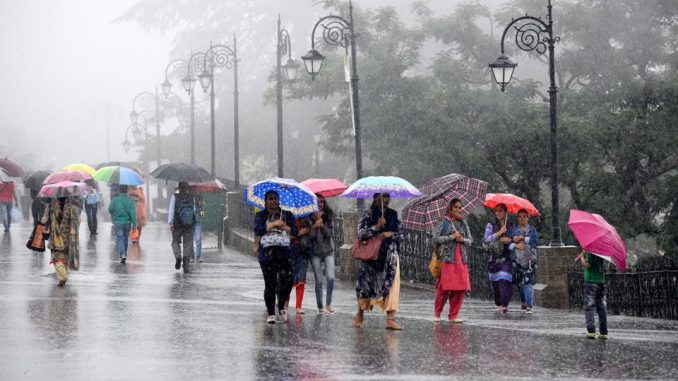
In News
A team of researchers from IIT Bombay has identified the reasons for why there is shift in monsoon rainfall to north-west India and extreme rainfall over central India.
In-Detail
- Over the years, the summer monsoon rainfall of India has seen a pattern shift. More rains now occur in the north-western region of the country than before.
- The reason as identified by the IIT Bombay researchers is the change in irrigation policy.
- Researchers identified this through a land-surface model they developed that takes into account the amount of soil irrigation and agriculture patterns India.
- They came to a conclusion that even a change in irrigation policy has the potential to shift monsoon rains and intensify extreme rainfall with its feedback to the atmosphere.
The Research
- In September, there is maximum evapotranspiration from the land as they are heavily irrigated and crops are mature.
- This contribution of high moisture from the land to the atmosphere and leads to rainfall occurrence.
- The land-surface model that was currently in use did not take into account Indian conditions. These models considered irrigation to start at soil moistures at a very low state and ends when it reaches a slightly below saturated soil moisture state.
- The IIT Bombay model takes into account Indian conditions where there is uncontrolled irrigation. Also, 50% of crop area is paddy where fields are submerged in water. The end result is the contribution of more water vapour to the atmosphere in India than in the west.
- The IIT Bombay researchers collaborated with Pacific Northwest National Laboratory to develop the model taking into account Indian conditions.
- As a result, it is clear that there is a change in moisture feedback to atmosphere in areas where there is a change in irrigation management.
Northwest India
- The land-surface processes affect the heat fluxes – temperature related and evapotranspiration.
- The land-use pattern of northwestern India and Central India in September affects these heat fluxes resulting in the distribution of rainfall over the northwest region and intensification of extreme rainfalls over Central India.
- However, the research has not looked into how irrigation and agriculture are influencing the monsoon over Southern India.
Conclusion
The impact of soil moisture on rainfall distribution has been identified as a fact by many researchers. The IIT Bombay’s research has clearly shown the shift in the monsoon rainfall and its intensification over parts of India. But, they have to undertake research, determining the same, in other parts of India so policymakers can take appropriate measures.

Leave a Reply
You must be logged in to post a comment.